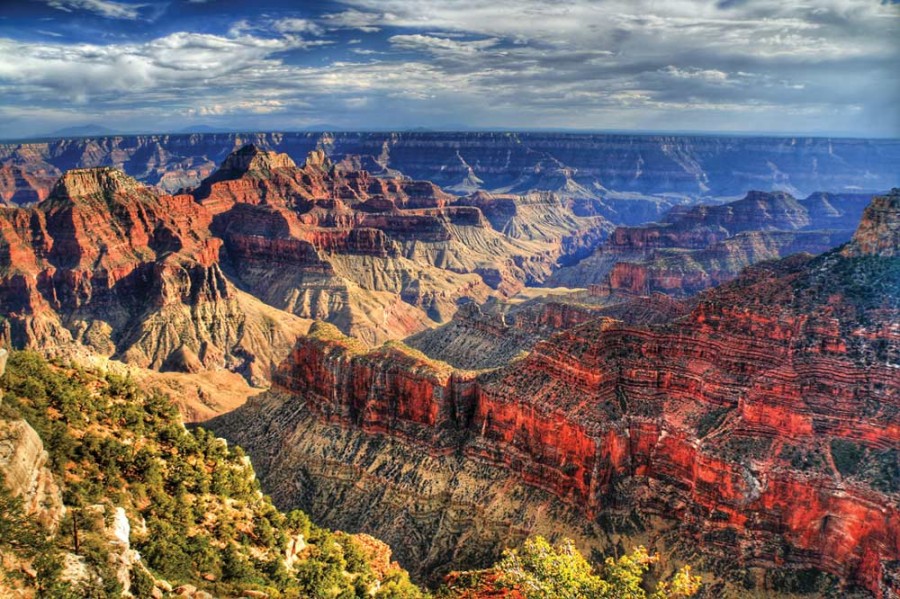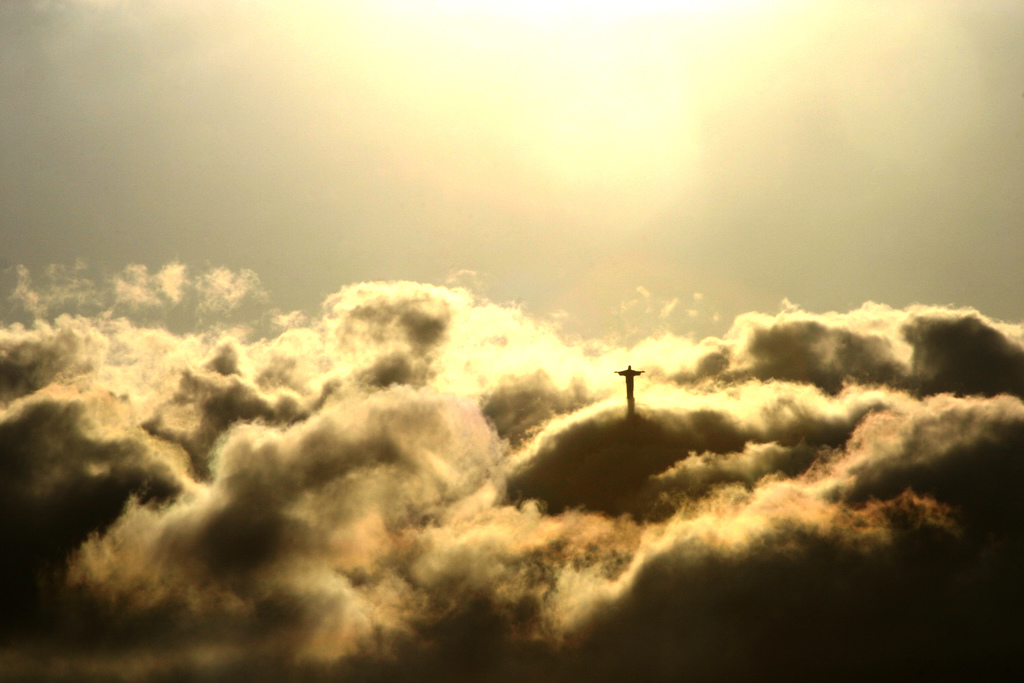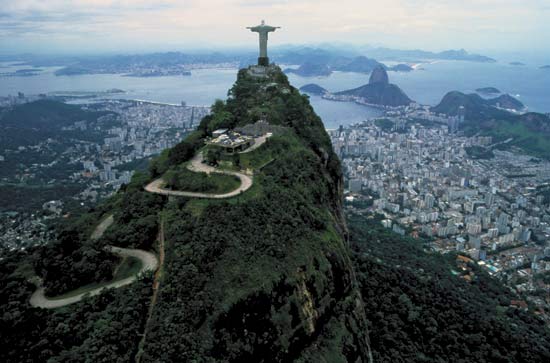It looks like you're using an Ad Blocker.
Please white-list or disable AboveTopSecret.com in your ad-blocking tool.
Thank you.
Some features of ATS will be disabled while you continue to use an ad-blocker.
4
share:
Aurora Borealis
The Aurora Borealis are still not fully understood today, and to me, it is the greatest natural wonder of them all. Many people have reported spiritual phenomenom when viewing the Aurora Borealis, unfortunately I am yet to see this incredible wonder with my own two eyes.
Source
The auroras, also known as the Northern Lights, are naturally occurring lights that create intriguing and spectacular displays in the sky. The aurora lights frequently appear as diffused glow lighting up the horizon. The most amazing sight is when the northern lights appears as waves across the sky; it is almost as if the lights are dancing.





The Grand Canyon
So big not even Evil Knievel could jump it
Source
The Grand Canyon, in northwestern Arizona, a national park now containing 1,904 square miles that was initially created in 1919, gives visitors one of the most picturesque vistas in the world. When one gazes upon it, it is impossible not to be mesmerized, and no words can describe that OMG feeling when you see it for the first time. More than its majesty, though, the rocks of the canyon are a geologic wonder, preserving geologic history dating to more than 2.5 billion years. Indeed, as Britannica notes:
Although its awesome grandeur and beauty are the major attractions of the Grand Canyon, perhaps its most vital and valuable aspect lies in the time scale of Earth history that is revealed in the exposed rocks of the canyon walls. No other place on Earth compares to the Grand Canyon for its extensive and profound record of geologic events.
Here today, however, we do celebrate of the grandeur and beauty of the Grand Canyon, designated a World Heritage site in 1979, letting images do all the talking.





Paricutin
This wonder is a cinder cone volcano located in Mexico, I dont know why its on the list but there we go, its here and its staying.
Source
A brief history:
The volcano began as a fissure in a cornfield owned by a P'urhépecha farmer, Dionisio Pulido, on February 20, 1943. Pulido, his wife, and their son all witnessed the initial eruption of ash and stones first-hand as they ploughed the field. The volcano grew quickly, reaching five stories tall in just a week, and it could be seen from afar in a month. Much of the volcano's growth occurred during its first year, while it was still in the explosive pyroclastic phase. The nearby villages Paricutín (after which the volcano was named) and San Juan Parangaricutiro were both buried in lava and ash; the residents relocated to vacant land nearby.




Victoria Falls
The largest Waterfall in the world, otherwise known as Mosi-oa-Tunya to South Africans. Yet again the pictures do the talking.





The Great Barrier Reef
The Great Barrier Reef is 133,000 square miles and is one of the most diverse eco-systems in the world, that consists of the largest Coral reef on Earth and 2,900 seperate reefs. It is simply one of the most beautiful places on Earth. A dream of mine is to travel to the reef, go scuba-diving and find a Mantis Shrimp. Enjoy the pictures.














Mount Everest
The highest mountain in the world, its peak reaches to a height of 29,029 feet. Impressive no? It is known among Himalayans as Chomolungma.





Rio de Janeiro Harbour
Finally!!! our last natural wonder of the world, but certainly not the least. Also known as Guanabana Bay, this is certainly a wonder to behold, I have had the pleasure myself of being in the Harbor, definetly recommended but in my opinion has unfortunately been somewhat abused by us, the people.
Source
The Harbor of Rio de Janeiro is located in Brazil and was created by erosion from the Atlantic Ocean and is also known as Guanabara Bay. The Harbour is surrounded by gorgeous granite monolith mountains that include the famous Sugar Loaf Mountain at 1,296 feet (395 m), Corcovado Peak at 2,310 feet (704 m), and the hills of Tijuca at 3,350 feet (1021 m). Visitors will also experience numerous islands including Governor's island, Fundao and Snakes Island.







Hope you enjoyed guys and girls, feel free to post your own pictures and contribute info on these seven incredible places.
Thankyou.
Really nice and well thought out thread. I enjoyed reading
Just a correction though, the third Everest photo is actually Ama Dablam.
And I believe the Tibetans call it Chomolungma, and the Nepalese call it Sagamartha
Just a correction though, the third Everest photo is actually Ama Dablam.
And I believe the Tibetans call it Chomolungma, and the Nepalese call it Sagamartha
edit on 1/13/2012 by zoso28 because: (no reason
given)
Nice-pics
4th-picture-down----Any-idea-what-that-circular-cloud?-formation-is?
4th-picture-down----Any-idea-what-that-circular-cloud?-formation-is?
Nice photos.
I've personally seen three.GC, GBR, Paracutin. My wife has seen those and Everest.
I'm working on the others.
I've personally seen three.GC, GBR, Paracutin. My wife has seen those and Everest.
I'm working on the others.
The 4th picture from the top. That is one massive cloud circle, I wonder how it formed.
reply to post by 12voltz
Now you mention it, it is a bit strange. I imagine it to be a strange cloud formation but you never know, could be a cloaked starship
Now you mention it, it is a bit strange. I imagine it to be a strange cloud formation but you never know, could be a cloaked starship
new topics
-
The daily fail trying to imply “it’s aliens”
The Gray Area: 4 hours ago -
Swarms of tiny 'ant-like' robots lift heavy objects and navigate obstacles
Science & Technology: 5 hours ago -
NYPD Chief Jeffrey Maddrey Resigns - Forced Officers to Give Sex for Overtime Pay and Favors.
Posse Comitatus: 6 hours ago -
The Carpet Coating that Attacked the Environment
Medical Issues & Conspiracies: 10 hours ago
top topics
-
The Carpet Coating that Attacked the Environment
Medical Issues & Conspiracies: 10 hours ago, 11 flags -
China Working on 'Drone Mothership' Plane
Military Projects: 17 hours ago, 10 flags -
Microplastics in your drinks
Medical Issues & Conspiracies: 12 hours ago, 5 flags -
Happy Rush Day 2024 - 2112
Music: 17 hours ago, 4 flags -
NYPD Chief Jeffrey Maddrey Resigns - Forced Officers to Give Sex for Overtime Pay and Favors.
Posse Comitatus: 6 hours ago, 3 flags -
Swarms of tiny 'ant-like' robots lift heavy objects and navigate obstacles
Science & Technology: 5 hours ago, 2 flags -
The daily fail trying to imply “it’s aliens”
The Gray Area: 4 hours ago, 1 flags
active topics
-
The daily fail trying to imply “it’s aliens”
The Gray Area • 2 • : andy06shake -
Microplastics in your drinks
Medical Issues & Conspiracies • 18 • : Naftalin -
'Mass Casualty event' - Attack at Christmas market in Germany
Mainstream News • 139 • : SprocketUK -
Just spotted an unusual aircraft Melbourne Australia
Aliens and UFOs • 8 • : andy06shake -
Why isn't Psychiatry involved?
Social Issues and Civil Unrest • 29 • : GENERAL EYES -
An Interesting Conversation with ChatGPT
Science & Technology • 33 • : GENERAL EYES -
Swarms of tiny 'ant-like' robots lift heavy objects and navigate obstacles
Science & Technology • 2 • : BeyondKnowledge3 -
Post A Funny (T&C Friendly) Pic Part IV: The LOL awakens!
General Chit Chat • 7942 • : imitator -
Drones everywhere in New Jersey ---and Elsewhere Master Thread
Aliens and UFOs • 221 • : imitator -
Donald Trump Should Offer AMNESTY to the BIDEN FAMILY For Indicting Blackmailers-Controllers.
US Political Madness • 78 • : WeMustCare
4
